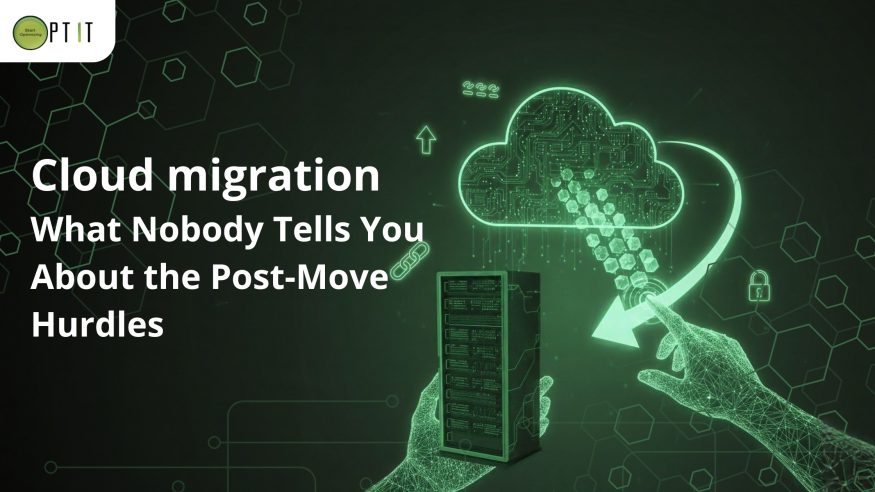
Cloud migration promises scalability, efficiency, and agility for organizations of all sizes. While the move itself marks a major accomplishment, the real journey and its challenges begin once systems go live. In the post-migration phase, businesses face unexpected hurdles that can impact returns from cloud investments.
Let’s uncover the least discussed but most important challenges that typically arise after migrating workloads to the cloud.
Businesses often overlook the ongoing costs of operating in the cloud. The “pay-as-you-go” model seems economical, but unchecked usage can lead to budget surprises like unused virtual machines, excessive storage, and duplicate resources .
Did you know?
Without a strong FinOps culture and proactive cost optimization, these hidden costs can reduce the financial benefits of cloud adoption.
Moving to the cloud introduces a shared responsibility model. While providers secure the infrastructure, your business must manage data, access controls, and configuration. 70% of cloud security incidents stem from basic misconfigurations .
Migration does not eliminate legacy systems. Many organizations manage hybrid setups, connecting older on-premise tools with modern cloud services. According to a stat , 38% of organizations reported difficulty integrating legacy systems; 25% cited a lack of skilled internal staff.
Challenges often arise due to:
Moving applications to the cloud does not guarantee better speed. Legacy applications may underperform in virtual environments, and multi-cloud/hybrid models complicate networking and troubleshooting. Continuous performance monitoring and cloud architecture optimization are crucial to maintain expected benefits.
Cloud transformation is not purely technological it requires cultural alignment too. Teams often resist embracing modern DevOps or CI/CD workflows, creating silos and eventually “cloud fatigue.” True transformation happens when IT, finance, compliance, and business units collaborate for a continuous shift.
Committing to one cloud provider can restrict future flexibility. Proprietary APIs and tools hinder movement between platforms and limit negotiation leverage.
True cloud transformation is an ongoing journey that demands vigilance, continuous optimization, and adaptability. Companies succeed when they address post-migration challenges with robust tools and an agile mindset.
Ready to reveal the potential of your cloud migration? Addressing these challenges now will help turn post-move obstacles into long-term gains.